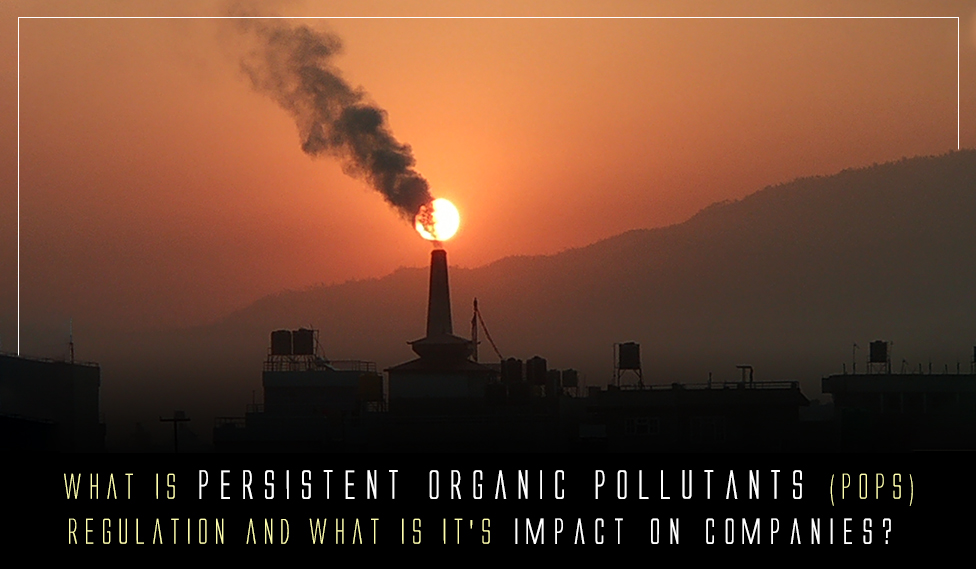
Persistent organic pollutants (POPs) are hazardous organic chemicals with particular properties: Persistent, Bioaccumulative, Toxic and very mobile (long‐distance travelers). It causes risks for humans and the environment such as Ecological and Health impacts.
Which substances are currently POPs?
POPs examples: Dichloro‐diphenyl‐trichloroethane (DDT), Polybomodiphenyl ether, Polychlorinated biphenyls (PCBs), Hexabromocyclododecane (HBCD), Polychlorinated dibenzo‐p‐dioxins and dibenzofurans (PCDD/PCDF)
Three Main Sources are Pesticides, Industrial chemicals and Unintentional production.
International Regulation And European POPs Regulation
The POPs are problematic and it needs global attention and cooperation and it is regulated worldwide by the Stockholm Convention and the Aarhus Protocol.
They have the same objectives, that is: control, reduce or eliminate POPs emissions into the environment.
The international treaty of Stockholm Convention and the Aarhus Protocol are implemented in the European Union by the POPs Regulation [Regulation (EU) 2019/1021 which is Recast of Regulation (EC) No 850/2004].
POPs Regulation Is Called Regulation (EU) 2019/1021
The aim is to protect human health and the environment with specific control measures. POPs regulation introduces specific control measures to prohibit or severely restrict the production, placing on the market and use of POPs. This regulation also aims at minimizing the environmental release of POPs that are formed as industrial by‐products. Another issue it tackles is the stockpiles of restricted POPs and its management. This regulation also ensures environmentally sound disposal of waste consisting of, or contaminated by the POPs.
Substances listed under the EU POPs Regulation has 4 important annexes. As of today there are 30 unique substances/entries that can found in the ECHA website. At the time of writing this article it was last updated on 30th March 2022.
- Annex I has substances under prohibition – 28 substances
[Examples: Endosulfan and its isomers, Hexabromocyclododecane (HBCDD), Pentachlorophenol and its salts and esters, etc.]
- Annex II has substances under restriction – zero substances
- Annex III has substances under release reduction provisions – 7 substances
[Examples: Polychlorinated dibenzo-p-dioxins and dibenzofurans (PCDD/PCDF), Polycyclic aromatic hydrocarbons (PAHs), Hexachlorobenzene, etc.]
- Annex IV has substances under waste management provisions – 26 substances
[Examples: Chlordecone, Aldrin, Dieldrin, etc.]
Proposals For New POPs
Any Party to the Stockholm convention can propose a new POP through Assessment and amendment process.
Impact On Companies
Just like REACH regulation of the European Union is adopted to improve the protection of human health and the environment from the risks that can be posed by chemicals, at the same time enhance the competitiveness of the EU chemicals industry. Similar to that, POPs regulation is also adopted to improve the protection of our health and the environment from risk posed by Persistent organic pollutants (POPs), therefore the POPs regulation impacts on companies like mentioned below.
1. Prohibition & Restriction [Article 3 POPs Regulation]
According to the Article: The manufacturing, placing on the market and use of substances listed under Annex I are prohibited.
Also, the manufacturing, placing on the market and use of substances listed under Annex II are restricted
2. Exemptions According To Article 4 And Annex I Of The POPs Regulation
General exemptions are:
- The substance used for laboratory‐scale research or as a reference standard
- The substance which is present as unintentionally found trace contaminant (concentration limits, Annex I)
Time‐limited exempted uses for
- C‐decaBDE [Examples: Parts of aircraft, Parts of vehicles, Additives in heating appliances]
3. Stock Management [Article 5 POPs Regulation]
The stockpiles that has POP substances may result in health and environmental issues if it is not managed appropriately, which is why the Stockpile possession requires particular provisions.
- The Stockpiles needs to be managed in a safe, efficient and environmentally sound way.
4. Waste Management [Article 7 POPs Regulation]
Companies need to avoid the contamination of waste with POP substances listed in Annex IV. If the waste is consisting or contaminated by POPs listed in Annex IV, then for that Waste should be disposed or recovered without any delay according to specific operations listed in Annex V, part 1 to ensure that the POPs content is destroyed or irreversibly transformed.
Alternatives Needed For POPs
There should be a support transition to safer alternatives by using substances without POPs characteristics and Lower risk, so that there is Protection of human health and the environment
The Reduction, Minimisation And The Elimination Of Substances Release [Article 6 POPs Regulation]
For, POP substances listed in Annex III ‐ unintentional by‐products of industrial processes
Member States obligation:
- draw up inventories
- communicate appropriate national action plans, there should be Continuous & cost‐effective reduction
- For construction proposals of new facilities or modification of existing ones, should consider alternative processes, techniques or practices
We Sunstream as a team look forward to integrate and deliver the customized solutions in the area of Product Environmental Compliance which includes Persistent Organic Pollutants (POPs) Regulation and REACH compliance to our customers with excellence
For More Reference Click This Links:



 +1.585.935.7123
+1.585.935.7123 +91-804-148-6861
+91-804-148-6861